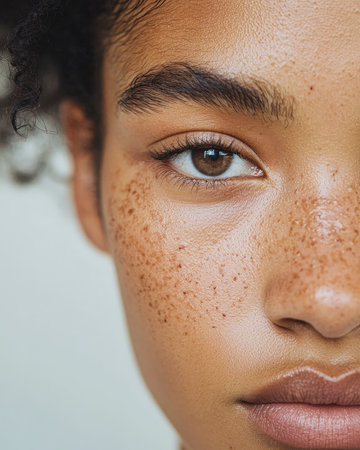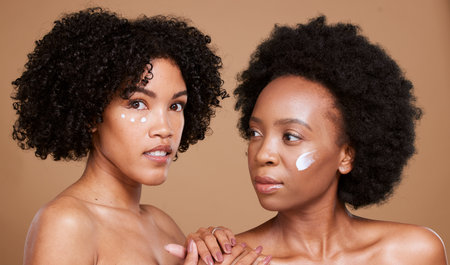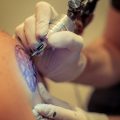Understanding Sun Damage in the UK Climate
Sun damage is often underestimated in the United Kingdom due to its famously unpredictable and frequently overcast weather. Many believe that the risk of sunburn or long-term skin damage is minimal because British skies are rarely clear for prolonged periods, and temperatures tend to be mild. However, this perception can be misleading. Ultraviolet (UV) radiation penetrates clouds and remains a persistent threat throughout the year, regardless of visible sunlight or warmth. In fact, UV levels can be surprisingly high even on cloudy days or during cooler months, contributing to cumulative skin damage across all ethnicities and skin types. Understanding these unique aspects of the UK climate is crucial for dispelling myths about sun safety. While the British weather may not always seem conducive to traditional ‘sunbathing’, daily incidental exposure—such as walking to work, gardening, or outdoor sports—adds up over time. As such, a tailored approach to sun protection is essential for everyone living in Britain, highlighting the need for public awareness beyond the summer holiday season.
2. The Fitzpatrick Scale: Classification of British Skin Types
The Fitzpatrick Skin Phototype Classification remains a cornerstone in assessing how skin responds to ultraviolet (UV) radiation, and is highly relevant in the context of the UKs increasingly multicultural society. Originally developed in the 1970s, this scale categorises skin types based on their reaction to sun exposure, specifically their propensity to burn or tan. In Britain, where populations represent a wide spectrum of ethnic backgrounds—from fair-skinned individuals of Northern European descent to those with darker phototypes from South Asian, African, or Caribbean heritage—accurate classification is essential for tailoring sun protection and repair strategies.
Technical Overview of the Fitzpatrick Scale
The Fitzpatrick Scale segments skin into six distinct phototypes (I-VI), each characterised by specific melanin levels and typical responses to sunlight. This framework enables dermatologists and skincare professionals to better predict risks associated with sun damage, including erythema, pigmentation changes, and long-term photoageing. Understanding where an individual fits within this classification informs both preventative advice and post-exposure interventions.
Fitzpatrick Skin Types in the UK Population
| Phototype | Description | Typical Reaction to Sun | Prevalence in UK |
|---|---|---|---|
| I | Very fair; often with freckles, red or blonde hair | Always burns, never tans | Common among Celtic ancestry |
| II | Fair; light eyes and hair | Usually burns, tans minimally | Widespread in British Isles |
| III | Medium; darker white skin | Sometimes mild burn, gradually tans | Southern European/British mix; urban areas |
| IV | Olive or light brown skin | Seldom burns, tans easily | Mediterranean & mixed ethnicities in UK cities |
| V | Brown skin | Rarely burns, tans profusely | South Asian & Afro-Caribbean British communities |
| VI | Dark brown or black skin | Never burns, deeply pigmented skin remains unchanged by sun exposure | African & Afro-Caribbean descent in Britain’s major cities |
Cultural Relevance and Clinical Implications for the UK
The significance of the Fitzpatrick scale extends beyond clinical dermatology—it serves as a vital tool for public health messaging and product development within the British context. For instance, sunscreen formulations and educational campaigns must be inclusive, recognising that while darker phototypes are less prone to burning, they remain susceptible to cumulative UV damage and unique pigmentary disorders. By leveraging this classification system, healthcare providers can deliver nuanced advice that resonates across all ethnic groups in the UK, ensuring effective protection and targeted repair against sun-induced skin damage.

3. Sun Damage: Recognising Risks Across Ethnicities
Understanding sun damage in the British context requires a nuanced appreciation of the nation’s multi-ethnic population and the unique challenges faced by different skin types. While melanin does provide some natural defence against ultraviolet (UV) radiation, recent dermatological research highlights that no skin type is completely immune to sun-induced harm. This growing body of evidence has driven a shift in public health messaging across the UK, moving away from a ‘one-size-fits-all’ approach towards targeted recommendations.
Melanins Protective Limits: Debunking Myths
It is a common misconception—especially among those with darker skin tones—that higher melanin levels offer complete protection from the adverse effects of the sun. While melanin does absorb and scatter UV rays, thereby reducing the risk of immediate burns, it cannot fully prevent long-term DNA damage, premature ageing, or an increased likelihood of hyperpigmentation. Importantly, cases of melanoma and other skin cancers are rising among ethnic minorities in Britain, often due to late diagnosis linked to this false sense of security.
Cultural Attitudes and Behavioural Trends
British sun care culture is also evolving. Traditionally, paler-skinned Britons have been more attuned to sun protection due to rapid burning; however, awareness campaigns now increasingly target all communities. A trend among younger generations is greater acceptance of daily SPF use as part of regular skincare routines, regardless of ethnicity. Yet, surveys reveal persistent disparities—many people with medium to dark skin still underutilise sun protection products or rely solely on shade and clothing. This gap underscores the need for tailored education addressing both cultural perceptions and the specific risks associated with different skin types.
Towards Personalised Protection Strategies
The latest public health guidance advocates personalising sun safety advice based on individual risk profiles rather than solely on ethnicity. For example, those with Fitzpatrick Skin Types I-II (fair) are counselled about short burn times and high cancer risk, while Types V-VI (dark) receive information about subtle signs of damage and pigmentation issues. The trend in dermatology is clear: effective prevention must bridge cultural understanding with scientific nuance, ensuring every Briton—regardless of background—has access to relevant knowledge and resources for optimal sun protection.
4. Tailoring Sun Protection to Individual Needs
Personalising sun protection is essential in the UK, where a richly diverse population encompasses a broad spectrum of skin tones and ethnic backgrounds. A one-size-fits-all approach is inadequate; instead, a nuanced strategy that considers individual skin type, lifestyle, and cultural practices is required. Below is practical guidance for British residents on how to select the right products and develop effective routines tailored to their unique needs.
Understanding Fitzpatrick Skin Types
The Fitzpatrick scale remains a widely accepted tool for classifying skin types based on their response to UV exposure. This understanding forms the basis for personalising sun care:
| Fitzpatrick Type | Description | Sunburn Risk | Tanning Ability |
|---|---|---|---|
| I | Pale white, freckles, often red hair | Very high | None |
| II | Fair, often with blue eyes | High | Minimal |
| III | Medium white, sometimes light brown hair/eyes | Moderate | Gradual tan |
| IV | Olive or light brown skin, dark hair/eyes | Low-Moderate | Tans easily |
| V-VI | Brown to dark brown/black skin tones (South Asian, African, Afro-Caribbean heritage) | Low | Tans very easily; rarely burns |
Selecting Sun Protection Products by Skin Type and Ethnicity
The UK market offers a growing range of sun protection options suitable for all ethnicities. Here are some targeted recommendations:
- Pale & Fair Skin (Types I-II): Opt for broad-spectrum SPF 30–50+ products; seek out formulations with added antioxidants to combat free radical damage.
- Medium & Olive Skin (Types III-IV): Use SPF 20–30 daily; consider lightweight gels or fluid sunscreens that blend well and avoid ashy residue.
- Darker Skin Tones (Types V-VI): Choose clear or tinted mineral sunscreens (zinc oxide/titanium dioxide) formulated for darker complexions to prevent white cast. SPF 15–30 is generally adequate, but higher factors are advisable during intense sun exposure.
- Cultural Considerations: For those who wear hijabs or other head coverings, focus on exposed areas such as face and hands. For individuals with beards or textured hair, non-comedogenic sprays or sticks can ensure even application without residue build-up.
Routine Integration: Making Sun Protection Habitual in the UK Climate
- Mornings: Apply sunscreen as the final step of your skincare routine year-round, even on cloudy days.
- Reapplication: Reapply every two hours when outdoors or after sweating/swimming. Keep travel-sized products handy for convenience.
- Lifestyle Adaptation: Encourage use in schools and workplaces; integrate sun hats and UV-protective clothing into daily attire during spring and summer months.
- Cultural Festivities: During outdoor gatherings—such as Eid celebrations, summer carnivals, or Notting Hill Carnival—make group sun protection a shared practice.
Summary Table: Personalised Sun Care Guidance by Skin Type & Background
| Skin Type/Ethnicity Group | Recommended SPF Range | Sunscreen Formulation Tips | Cultural Integration Tips |
|---|---|---|---|
| Pale/Fair (Caucasian/British Isles) | 30–50+ | Creams with antioxidants; fragrance-free options for sensitive skin. | Sunscreen before school runs/work commutes. |
| Olive/Light Brown (Mediterranean/South European) | 20–30+ | Non-greasy fluids; mattifying finish for oilier skin. | Sunscreen with daily moisturiser for ease. |
| Darker Tones (South Asian/African/Afro-Caribbean) | 15–30+ | Tinted/mineral-based formulas; avoid white cast. | Sunscreen application before religious/cultural events. |
| Mixed Heritage/British Multicultural Communities | 20–50+ | Select based on predominant skin traits; patch test new products. | Create family-wide sun care routines; community awareness campaigns. |
Key Takeaway: Customisation Is Crucial for Effective Sun Safety Across Britain’s Diverse Population.
This tailored approach ensures optimal protection from harmful UV rays while respecting individual preferences and cultural practices—empowering everyone in Britain to enjoy the outdoors safely and inclusively.
5. Repairing Sun Damage: Evidence-Based Approaches
Latest Research on Sun Damage Reversal
Recent studies conducted by UK-based dermatological institutes have highlighted that sun damage repair must be tailored to individual skin types and ethnic backgrounds. While fair-skinned individuals are more prone to DNA mutations and collagen degradation, darker skin tones often face uneven pigmentation and stubborn dark spots. British researchers emphasise the role of topical antioxidants—such as vitamin C serums and niacinamide—in neutralising free radicals and supporting the skin’s natural repair mechanisms. Retinoids remain a gold standard for stimulating cell turnover across all ethnicities, but their potency should be calibrated to minimise irritation in sensitive or highly pigmented skin.
Topical Treatments Suited for British Skin Types
The British climate, characterised by fluctuating humidity and seasonal changes, necessitates moisturisers rich in ceramides and hyaluronic acid to restore barrier function post-sun exposure. For multi-ethnic populations, formulas containing liquorice extract or azelaic acid can help reduce hyperpigmentation without risking further irritation. Dermatologists in the UK recommend patch testing before full application, especially for those with a history of eczema or post-inflammatory hyperpigmentation, which are prevalent among Asian and Black British communities.
Dietary Considerations for Enhanced Repair
Nutrition plays a pivotal role in repairing sun-induced skin damage. British dietitians advocate a Mediterranean-style diet rich in omega-3 fatty acids, carotenoids (from carrots and leafy greens), and polyphenols (from berries and green tea). These nutrients support cellular regeneration and protect against further UV-induced harm. For those with vitamin D deficiencies—a common concern given the UK’s limited sunlight—supplementation should be considered under medical supervision to maintain overall skin health.
Clinical Interventions: What’s Available in the UK?
For persistent sun damage such as actinic keratoses or pronounced photo-ageing, UK clinics offer evidence-based procedures including chemical peels, laser therapy, and microneedling. The National Health Service (NHS) provides guidance on safe treatment options based on Fitzpatrick skin type, ensuring that risk factors like post-treatment pigmentation are minimised for darker-skinned patients. Consultation with a board-certified dermatologist is crucial for personalising interventions—particularly for those with complexion-specific concerns unique to the diverse British population.
Personalised Repair Strategies: A Holistic Approach
Addressing sun damage in Britain’s ethnically diverse society requires an integrated approach combining topical science, nutrition, and advanced clinical care. By staying informed about ongoing research and adapting routines according to both genetic predispositions and local environmental factors, Britons of all backgrounds can optimise their skin’s recovery from solar exposure.
6. Emerging Trends and Innovations in Sun Care
Sun protection in the UK is rapidly evolving, driven by new technologies, shifting ingredient preferences, and government-backed health initiatives designed to address the diverse needs of Britain’s multi-ethnic population. The industry is moving beyond a “one-size-fits-all” approach, focusing on personalising sun care to cater for different skin tones and sensitivities.
Technological Advancements in Sun Protection
Recent years have seen the development of advanced sunscreen formulations tailored to various British skin types. Smart sun care products now incorporate DNA repair enzymes, antioxidant complexes, and light-responsive ingredients that offer targeted defence against UVA, UVB, and even visible light damage. Innovations such as non-greasy gels and invisible sprays are particularly popular among people with darker skin tones, who often struggle with white residue from traditional sunscreens.
Inclusive Ingredient Trends
There is growing demand for products free from common allergens and irritants, with brands increasingly turning to mineral-based filters like zinc oxide and titanium dioxide. These ingredients provide broad-spectrum protection without causing ashy tones or breakouts. Moreover, botanical extracts—such as liquorice root and vitamin E—are being incorporated for their soothing and reparative properties, supporting after-sun care for all ethnicities.
Public Health Initiatives and Education
The NHS and Public Health England have launched campaigns aimed at educating Britons from diverse backgrounds about the importance of year-round sun protection. Programmes now include culturally relevant messaging and resources available in multiple languages, encouraging individuals with darker skin not to underestimate their risk of sun damage. Community outreach in schools and local clinics further supports early intervention and personalised prevention strategies.
The Future: Personalised Digital Solutions
Emerging digital tools—such as AI-powered skin analysis apps—allow users to assess their own risk profile based on ethnicity, lifestyle, and UV exposure patterns across the UK’s varied climate. These platforms recommend bespoke routines for both prevention and aftercare, signalling a future where sun protection is truly inclusive and responsive to individual needs.
Together, these trends reflect a commitment within the UK to making sun care more accessible, effective, and respectful of Britain’s rich ethnic diversity—ensuring everyone can enjoy the outdoors safely while maintaining healthy skin.


